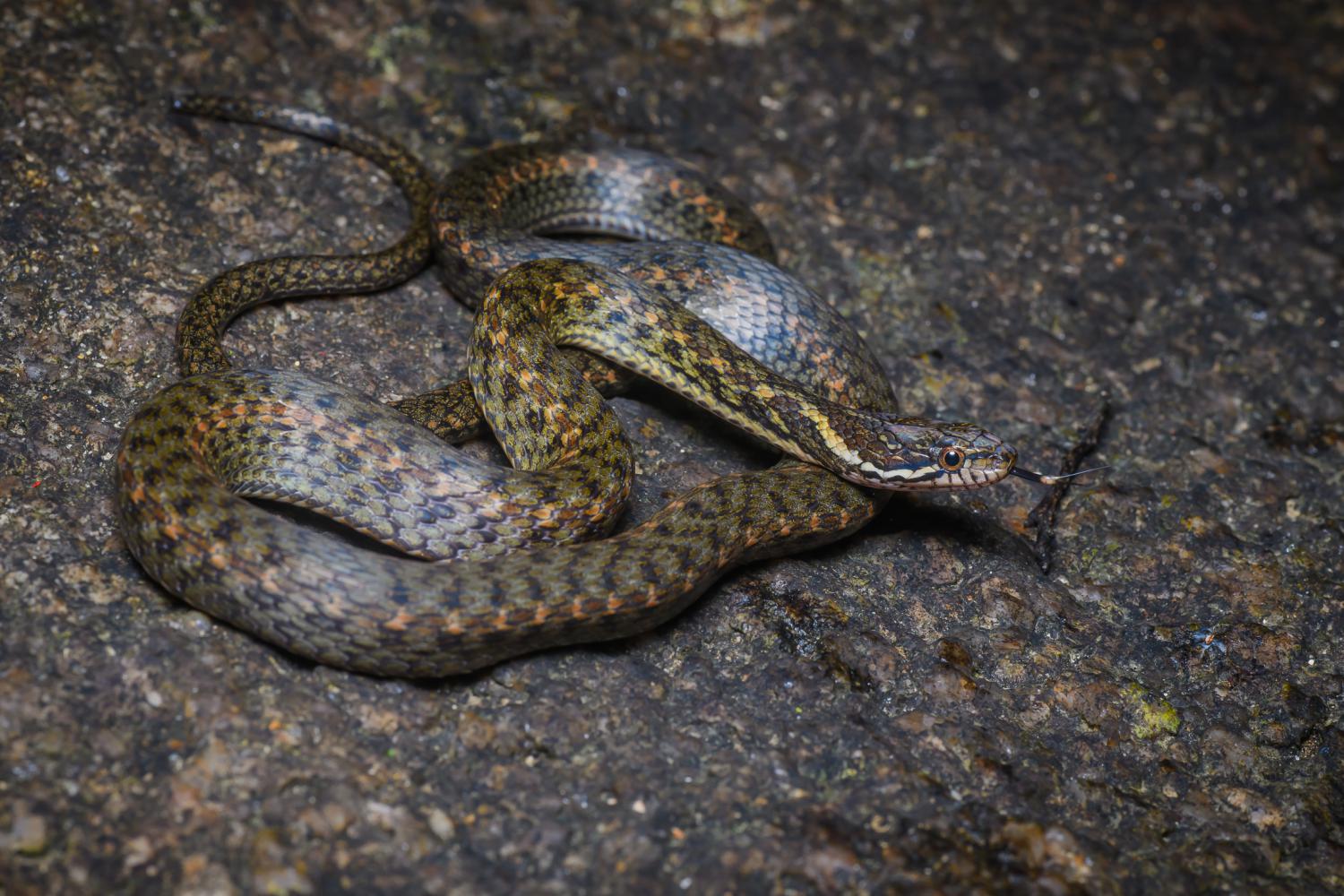
Are you ready to explore the fascinating world of reptiles? If so, get ready to learn about one of the most enigmatic and intriguing species, Boulenger’s Keelback. With its sleek and slender body, striking coloration, and mysterious behavior, this snake has captured the attention of researchers and reptile enthusiasts alike.
In this article, we will delve into 13 fascinating and sometimes puzzling facts about Boulenger’s Keelback. From its unique habitat preferences to its peculiar feeding habits, there is so much to learn about this captivating serpent. So, whether you’re a reptile lover looking to expand your knowledge or simply someone intrigued by the wonders of the animal kingdom, join us as we unravel the secrets of Boulenger’s Keelback.
Key Takeaways:
- Boulenger’s Keelback is a secretive, semi-aquatic snake with a unique scale pattern. It’s mild-mannered, but its conservation status is uncertain due to habitat loss and pollution.
- This snake from Southeast Asia has fascinating mating behavior and displays parental care. Its color variations and territorial behavior make it a truly enigmatic species.
The Boulenger’s Keelback is a highly elusive snake.
This species of snake, scientifically known as Amphiesma Boulengeri, is notorious for its secretive nature and ability to blend seamlessly into its environment.
It is native to the Southeast Asian region.
Boulenger’s Keelback can be found in various countries across Southeast Asia, including Thailand, Myanmar, Vietnam, and Cambodia.
It is a semi-aquatic snake.
The Boulenger’s Keelback prefers to inhabit areas near water bodies such as streams, rivers, and marshes. It is an excellent swimmer and is often seen hunting for its prey in the water.
It possesses a unique keeled scale pattern.
One of the distinctive features of the Boulenger’s Keelback is its keeled scales, which give it a rough and bumpy appearance. These scales aid in camouflage and provide protection.
Boulenger’s Keelback is known for its mild temperament.
Unlike some other snake species, the Boulenger’s Keelback is generally non-aggressive and docile towards humans. However, it can still deliver a venomous bite if provoked.
It primarily feeds on small amphibians and fish.
The diet of the Boulenger’s Keelback mainly consists of frogs, toads, tadpoles, and small fish that it captures both on land and in water.
The mating behavior of this species is fascinating.
During the breeding season, male Boulenger’s Keelbacks engage in intense combat with each other to win the attention of the female. The winner then mates with the female, and the eggs are laid shortly after.
It displays parental care.
Once the eggs are laid, the female Boulenger’s Keelback takes on the responsibility of incubating them until they hatch. This behavior is relatively uncommon among snake species.
The Boulenger’s Keelback has a specialized respiratory system.
Adapted to its semi-aquatic lifestyle, this snake possesses a valvular nostril that allows it to breathe even when submerged underwater.
It relies on its keen senses for hunting and navigation.
The Boulenger’s Keelback has excellent eyesight and uses its well-developed sense of smell and heat-detecting pits to locate prey and navigate its environment.
This snake has a wide variety of color variations.
The Boulenger’s Keelback exhibits a range of colors, including shades of brown, green, yellow, and black. This variation contributes to its camouflage abilities.
Boulenger’s Keelback shows territorial behavior.
These snakes mark and defend their territories using scent glands located on their cloacal region. This behavior ensures access to resources and mates.
Conservation status of this snake species is under evaluation.
Due to its elusive nature and limited research, the Boulenger’s Keelback’s conservation status is yet to be fully assessed. However, habitat loss and pollution pose potential threats to its population.
Conclusion
After delving into these enigmatic facts about Boulenger’s Keelback, it’s clear that this snake species has its fair share of mysteries. From its ability to change color to its unique diet and habitat preferences, this snake continues to fascinate researchers and wildlife enthusiasts alike.
While its venomous nature may raise concerns, it’s important to note that Boulenger’s Keelback is typically non-aggressive and not considered a threat to humans. However, it should always be approached with caution and respected as a wild animal.
As our understanding of these fascinating creatures continues to evolve, we can only hope to uncover more of their secrets and marvel at their remarkable adaptations. Boulenger’s Keelback serves as a reminder of the incredible diversity and complexity of the animal kingdom.
FAQs
1. Are Boulenger’s Keelbacks venomous?
Yes, Boulenger’s Keelbacks are venomous. Their venom is potent and primarily used for subduing their prey.
2. What do Boulenger’s Keelbacks eat?
Boulenger’s Keelbacks primarily feed on small vertebrates such as frogs, lizards, and small snakes.
3. How do Boulenger’s Keelbacks change color?
Boulenger’s Keelbacks have the ability to change color, depending on their surroundings and temperature. This helps them camouflage and adapt to their environment.
4. Where are Boulenger’s Keelbacks found?
Boulenger’s Keelbacks are found in various parts of Asia, including India, Bangladesh, Myanmar, and Thailand.
5. Are Boulenger’s Keelbacks aggressive towards humans?
Boulenger’s Keelbacks are generally non-aggressive towards humans. However, like any wild animal, they should be approached with caution and respect.
Was this page helpful?
Our commitment to delivering trustworthy and engaging content is at the heart of what we do. Each fact on our site is contributed by real users like you, bringing a wealth of diverse insights and information. To ensure the highest standards of accuracy and reliability, our dedicated editors meticulously review each submission. This process guarantees that the facts we share are not only fascinating but also credible. Trust in our commitment to quality and authenticity as you explore and learn with us.
